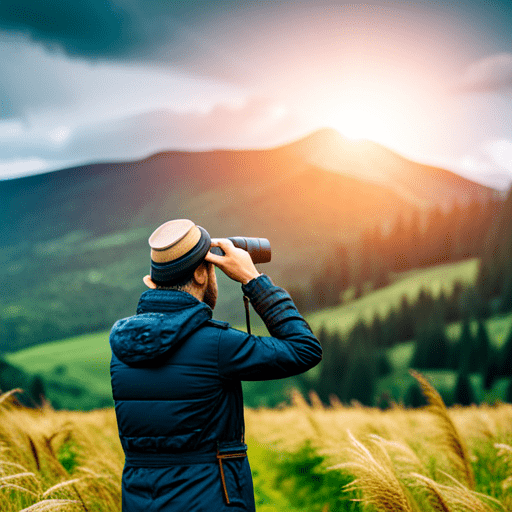Selecting the right pair of binoculars can significantly enhance your viewing experience, whether you’re bird watching, attending sporting events, hiking, or stargazing. However, with a plethora of options available on the market, making the right choice can be daunting. This guide aims to simplify the process by outlining key factors to consider and offering practical advice to help you find binoculars that meet your needs and budget.
Understanding Binocular Specifications

- Magnification and Objective Lens Diameter
Binoculars are often described by a set of numbers, such as 8×42 or 10×50. The first number indicates the magnification power, or how many times closer an object will appear compared to the naked eye. The second number represents the diameter of the objective lens (the lens farthest from your eyes) in millimeters. Larger objective lenses gather more light, providing a brighter image, especially useful in low-light conditions.
- Field of View
The field of view (FOV) is the width of the area you can see through the binoculars, usually measured in feet at a distance of 1,000 yards. A wider FOV is advantageous for tracking fast-moving objects, such as birds or athletes, as it allows you to see more of the scene without adjusting your binoculars.
- Exit Pupil
The exit pupil is the diameter of the beam of light that exits the eyepiece, calculated by dividing the objective lens diameter by the magnification. For example, an 8×42 binocular has an exit pupil of 5.25mm (42/8). A larger exit pupil provides a brighter image and is especially important in low-light situations.
Key Features to Consider
- Lens Coatings
High-quality binoculars often feature multiple layers of anti-reflective coating on their lenses. These coatings reduce glare and increase light transmission, resulting in clearer and brighter images. Look for terms like “fully multi-coated” lenses for the best performance.
- Prism Types
Binoculars use prisms to correct the orientation of the image. The two main types are Porro prisms and roof prisms. Porro prisms tend to be bulkier but offer better depth perception and a wider field of view. Roof prisms are more compact and durable but can be more expensive for comparable optical quality.
- Eye Relief
Eye relief is the optimal distance from the eyepiece lens to your eye, important for comfort, especially for eyeglass wearers. Look for binoculars with at least 15mm of eye relief if you wear glasses.
- Weather Resistance
If you plan to use your binoculars outdoors frequently, consider models that are water-resistant or waterproof. Fog-proof binoculars, which are sealed and filled with nitrogen or argon, prevent internal fogging in humid or cold conditions.
Budget Considerations
- Entry-Level Binoculars
For casual use or beginners, entry-level binoculars in the $50 to $150 range can offer decent performance. Brands like Celestron and Bushnell provide models that deliver good image quality and durability without breaking the bank.
- Mid-Range Binoculars
If you have a bit more to spend, mid-range binoculars priced between $150 and $500 can offer significant upgrades in optical quality and durability. Brands like Vortex and Nikon have excellent options in this category, featuring better lens coatings, more robust construction, and enhanced features like twist-up eyecups and longer eye relief.
- High-End Binoculars
For enthusiasts and professionals, investing in high-end binoculars ranging from $500 to over $2,000 ensures top-notch performance. Brands like Leica, Zeiss, and Swarovski are renowned for their exceptional optics, rugged build, and superior ergonomics. These binoculars offer the best in brightness, clarity, and low-light performance, making them ideal for serious bird watchers, hunters, and astronomers.
Final Tips
- Try Before You Buy: Whenever possible, test binoculars in person to assess their comfort, weight, and ergonomic fit. Pay attention to how easy they are to focus and how well they align with your eyes.
- Check Reviews: Online reviews and forums can provide valuable insights from other users about the performance and reliability of specific binocular models.
- Warranty and Customer Support: Consider the manufacturer’s warranty and customer support reputation. High-quality binoculars are an investment, and good warranty coverage can provide peace of mind.
Choosing the right binoculars involves balancing your specific needs with your budget. By understanding the key specifications and features, you can find a pair that enhances your viewing pleasure, whether for casual use or serious observation.
Leave a Reply